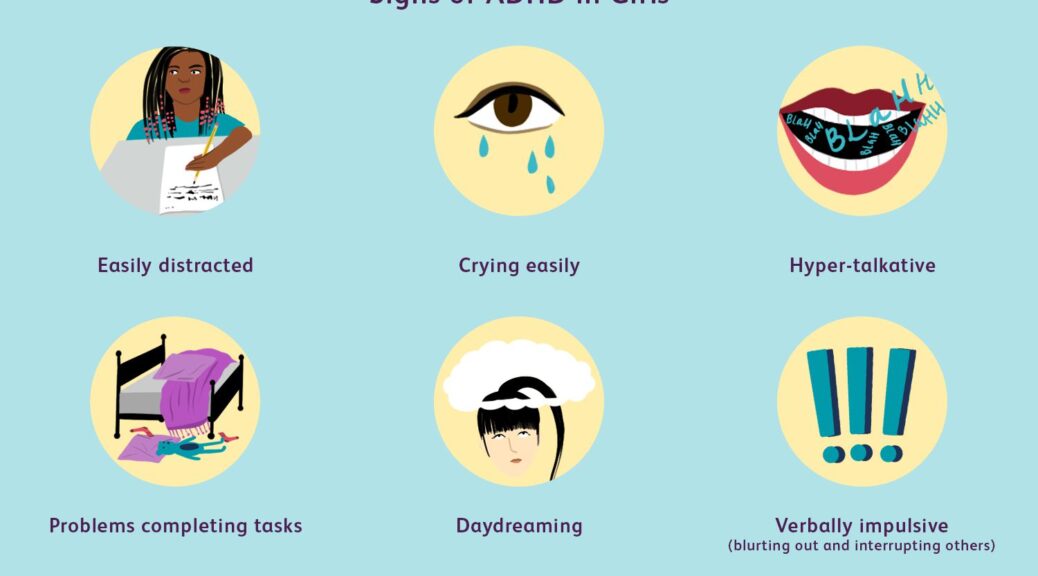
A Thorough Examination of the Difficulties Associated with Attention Deficit Hyperactivity Disorder
Overview
The neurodevelopmental disorder known as Attention Deficit Hyperactivity Disorder (ADHD) has attracted more attention recently. With its enduring patterns of hyperactivity, impulsivity, and inattention, ADHD presents particular difficulties for people of all ages. By analyzing the many facets of ADHD, talking about how it affects day-to-day functioning, and looking at various treatment modalities, this article seeks to offer a nuanced knowledge of the condition.
ADHD’s Complicated Tapestry
Many people compare ADHD to a complex tapestry made of interwoven neurological, environmental, and hereditary strands. Examining these components’ intricate interactions in further detail is necessary to unravel its origins. A significant factor is genetic predisposition; research indicates that those with a family history of ADHD are more prone to experience the illness. ADHD symptoms are partly caused by variations in the structure and function of the brain, especially in areas related to attention and impulse control.
The story is further complicated by environmental circumstances. There is evidence that prenatal exposure to alcohol, drugs, or tobacco smoke increases the likelihood of developing ADHD. Lead exposure in childhood, low birth weight, and premature birth are other environmental factors that may have a role in the development of ADHD. It’s crucial to remember that the causes of ADHD are complex, and we still don’t fully understand how these many elements relate to one another.
Effects on Day-to-Day Living
ADHD affects a person’s daily life in a variety of ways that go beyond the diagnostic parameters. The difficulties that ADHD presents in educational settings can result in social issues, academic underachievement, and a higher risk of developing comorbid conditions including learning disabilities. Obstacles that arise from the inability to focus, prioritize, and efficiently manage time can last well beyond adulthood.
Adults with ADHD may have trouble in the job adhering to deadlines, focusing during meetings, and staying organized on their assignments. Additionally, impulsivity can affect interpersonal relationships by causing misconceptions and difficulties in social situations. The comprehensive effects of ADHD on a person’s life highlight how crucial it is to identify and treat the illness in addition to its outward manifestations.
Getting Around the Emotional Terrain
A wide range of feelings that go beyond the common perception of hyperactivity characterize the complex emotional landscape of people with ADHD. An strong and erratic emotional spectrum is a common sign of emotional dysregulation, which is associated with ADHD. Rejection sensitivity, or an elevated sensitivity to perceived rejection or criticism, is another common symptom of ADHD that can exacerbate emotional difficulties for affected individuals.
These emotional difficulties can negatively impact one’s sense of self-worth and exacerbate depressive, anxious, and frustrated sentiments. Since emotional health is closely linked to overall functioning and quality of life, recognizing and treating the emotional aspects of ADHD is essential for a thorough understanding of the disorder.
Changing Attitudes in Diagnosis
Over time, the diagnosis of ADHD has changed to reflect a better knowledge of the disorder. The gold standard for diagnosing ADHD is the Diagnostic and Statistical Manual of Mental Disorders (DSM-5), which emphasizes the significance of evaluating symptoms in a variety of contexts and taking everyday functioning into account.
However, diagnosing ADHD can be difficult because some symptoms, such impulsivity and inattention, are subjective. Fears of overdiagnosis and misdiagnosis draw attention to the necessity of a thorough and meticulous review procedure that considers each person’s particular circumstances. The advancement of diagnostic viewpoints is crucial in guaranteeing precise identification and customized therapies for individuals impacted by ADHD.
Treatment Methods: Moving Past a One-Size-Fits-All Framework
It is common practice to manage ADHD using a multimodal approach, which recognizes the disorder’s diversity. Behavioral therapies are the cornerstone of treatment; they use techniques like cognitive-behavioral therapy to improve particular abilities like time management and organizing. Psychoeducation, which is teaching people with ADHD and their families about the characteristics of the condition, aids in the creation of coping mechanisms and a nurturing atmosphere.
Certain symptoms may require the prescription of medication, which may include both stimulants (such as methylphenidate and amphetamines) and non-stimulants (such as atomoxetine and guanfacine). Particularly stimulants have demonstrated efficacy in enhancing focus and lowering hyperactivity. However, choosing to take medication is a complicated decision that needs to be customized, taking into account the individual’s and their family’s preferences as well as possible side effects and tolerability.
Holistic Methods for Treating ADHD: Accepting Lifestyle Changes
Holistic therapies are becoming more and more popular in the management of ADHD in addition to conventional treatment modalities. A balanced diet, consistent exercise, and enough sleep are just a few of the lifestyle changes that are becoming recognized as essential to the treatment of ADHD. In addition to improving general wellbeing, these changes might lessen the symptoms of ADHD.
Meditation and yoga are examples of mindfulness-based practices that show promise in enhancing focus and lowering impulsivity. A more comprehensive model of ADHD care that addresses the patient’s general well-being in addition to symptom reduction can be promoted and overall effectiveness can be improved by incorporating these holistic approaches into the treatment plan.
In summary
The illness known as attention deficit hyperactivity disorder defies easy categorization, including a complex interplay of neurological, environmental, and hereditary factors. Its influence on day-to-day living goes well beyond the confines of the office or school; it affects interpersonal interactions and emotional health. New insights into diagnosis and the identification of the emotional aspects of ADHD have made it possible to develop more complex and all-encompassing methods of comprehending and treating the disorder.
The variety of treatment modalities for ADHD is reflected in them, ranging from behavioral therapies to medication and complementary therapies. Sustaining successful and long-lasting results requires that interventions take into account the individuality of each person. As the depths of ADHD continue to be explored, it is critical that we promote knowledge, understanding, and support so that those who must navigate its complexity can do so with resilience, empowerment, and a sense of community.